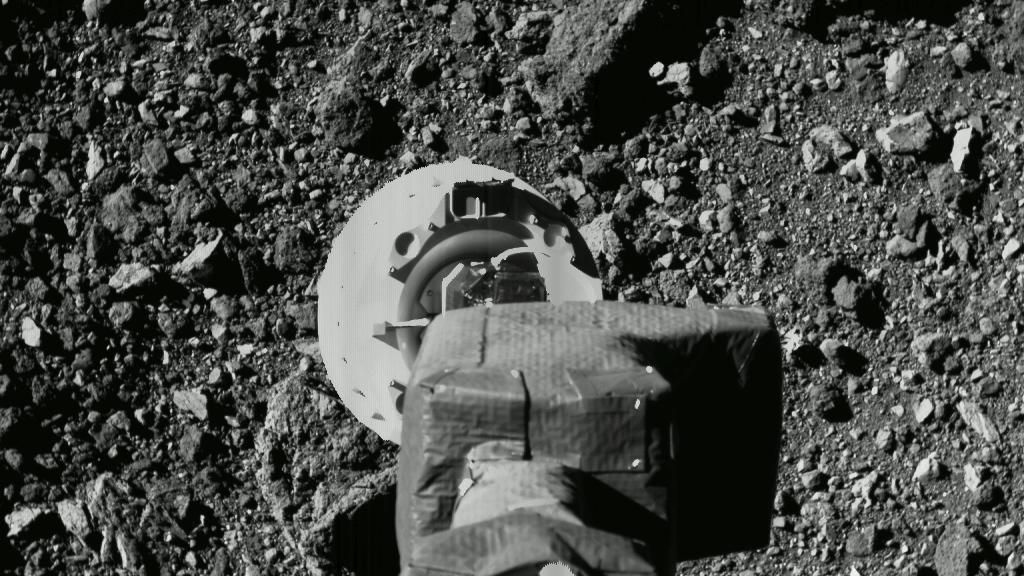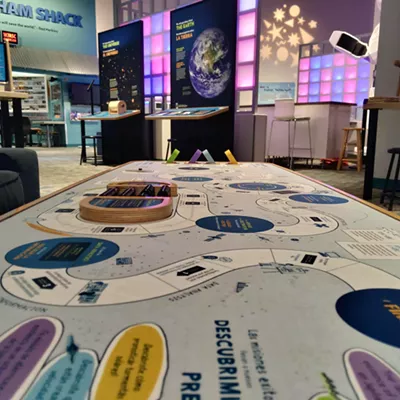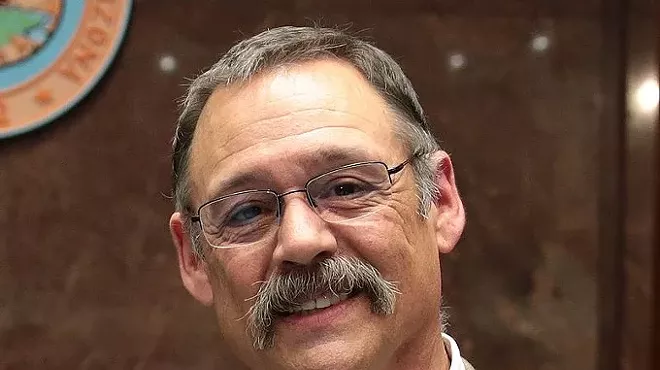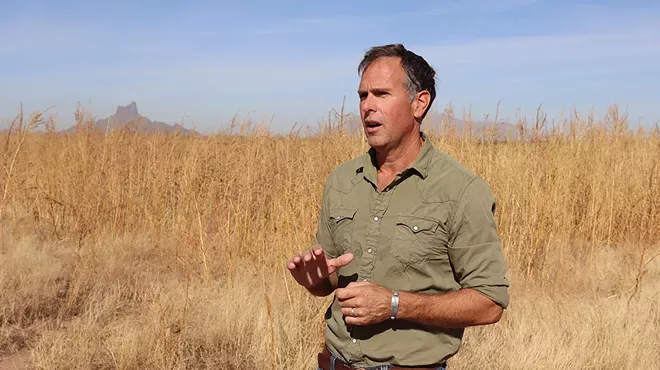Tuesday, April 21, 2020
OSIRIS-REx Captures Close-Up Asteroid Images
The Weekly's favorite space probe, the University of Arizona's OSIRIS-REx, is getting ever-closer to a key moment in its mission of gathering cosmic dust and pebbles from the surface of the asteroid Bennu.
On Tuesday, April 14, the NASA spacecraft captured the closest-ever images of the asteroid Bennu during a sample collection rehearsal. The images, taken only 200 feet from the asteroid's surface, show the rocky terrain that the OSIRIS-REx spacecraft plans to capture a sample of on Aug. 25.
According to UA, the images were recorded over a 10-minute span during sample collection rehearsal. The images show the spacecraft’s sampling arm—called the Touch-And-Go Sample Acquisition Mechanism—and Bennu's "Nightingale" sample site.
The UA/NASA mission launched on Sept. 8, 2016, and is expected to return to Earth with a sample of the asteroid's surface on Sept. 24, 2023. While OSIRIS-REx is anticipated to be the first U.S. space mission to return samples from an asteroid, the spacecraft will not land on Bennu's surface. Instead, it will use the Touch-And-Go Sample Acquisition Mechanism to shoot a jet of nitrogen, dislodging particles from the asteroid. The spacecraft is expected to be able to capture upwards of 60 grams worth of carbonaceous dust and rock ejected from Bennu's surface.
On Tuesday, April 14, the NASA spacecraft captured the closest-ever images of the asteroid Bennu during a sample collection rehearsal. The images, taken only 200 feet from the asteroid's surface, show the rocky terrain that the OSIRIS-REx spacecraft plans to capture a sample of on Aug. 25.
According to UA, the images were recorded over a 10-minute span during sample collection rehearsal. The images show the spacecraft’s sampling arm—called the Touch-And-Go Sample Acquisition Mechanism—and Bennu's "Nightingale" sample site.
"The goal of this checkpoint rehearsal is to make sure we get through the first two maneuvers needed to accomplish the sampling, and then safely back away," said Dani DellaGiustina, lead image processing scientist for the OSIRIS-REx mission in a press release. "What we're seeing here is the spacecraft as it approaches Bennu's surface, and once the spacecraft executes its checkpoint maneuver to initiate its descent, it pulls away."
The UA/NASA mission launched on Sept. 8, 2016, and is expected to return to Earth with a sample of the asteroid's surface on Sept. 24, 2023. While OSIRIS-REx is anticipated to be the first U.S. space mission to return samples from an asteroid, the spacecraft will not land on Bennu's surface. Instead, it will use the Touch-And-Go Sample Acquisition Mechanism to shoot a jet of nitrogen, dislodging particles from the asteroid. The spacecraft is expected to be able to capture upwards of 60 grams worth of carbonaceous dust and rock ejected from Bennu's surface.
"We've been planning this event for so long that all of us had a very concrete idea in our minds (of the checkpoint rehearsal), so you could say the only surprise was the fact that we saw exactly what we expected," DellaGiustina said. "I think that's a testament to our navigation team doing an extraordinary job."
Tags: science , nasa , asteroid , osiris , rex , ua , uarizona , Image















